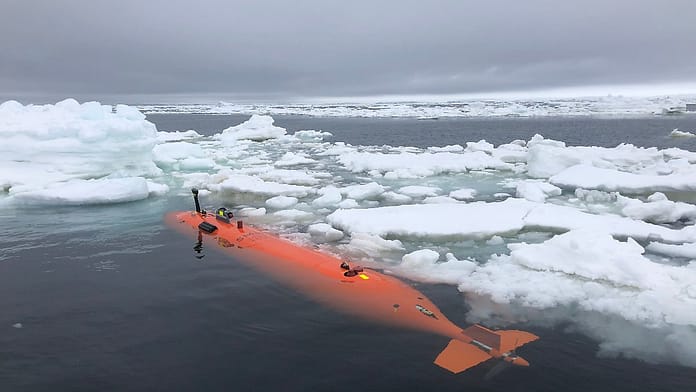“Doomsday Glacier” in Antarktis
Glacier ‘only sticks to nails’
08/09/2022 09:57 AM
The melting of glaciers has become an almost daily occurrence, but the situation in Thwaites in Antarctica is especially tragic: the giant is melting at an alarming rate at its base. And his total loss would drown coastal regions all over the world. Therefore it is also called the “Doomsday Glacier”.
According to a study, one of Antarctica’s giant glaciers is at risk of melting faster than previously thought – potentially leading to a dramatic rise in sea levels. subordinate Thwaites Gleacher Located in the western part of Antarctica, its area is 192,000 square kilometers, which is roughly the size of the US state of Florida. Because of its global significance, it is also called “Doomsday Glacier”. An international team of researchers has now mapped the ice giant’s retreat over the centuries with the aim of learning from it in the future. The results are alarming.
study was It was published in the journal Nature Geoscience.. The team used a self-driving underwater vehicle equipped with sensors. The researchers found that at some point during the past two centuries, the front of the glacier broke off from the sea floor in less than six months and then retreated at a rate of 2.1 kilometers per year — twice as fast as in previous years.
“Our results indicate a rapid decline of pulses in the Thwaites glacier over the past two centuries, and possibly into the mid-20th century,” said marine geophysicist Alistair Graham. University of South Floridaone of the lead authors of the study.
Solubility at the edge under water
The giant, which is under constant observation by scientists, is melting along the underwater edge due to warm ocean currents. A statement accompanying the study said that the potential impact of the Thwaites retreat is staggering, as the complete loss of the glacier and surrounding ice could lead to a sea level rise of 90 cm to 3 metres. As a result, coastal cities around the world could be partially submerged.
“Thwaites is now clinging to his nails,” warned co-author Robert Larter of the British Antarctic Survey. For the future, large changes can be expected on small time scales once the glacier recedes beyond a certain point.

